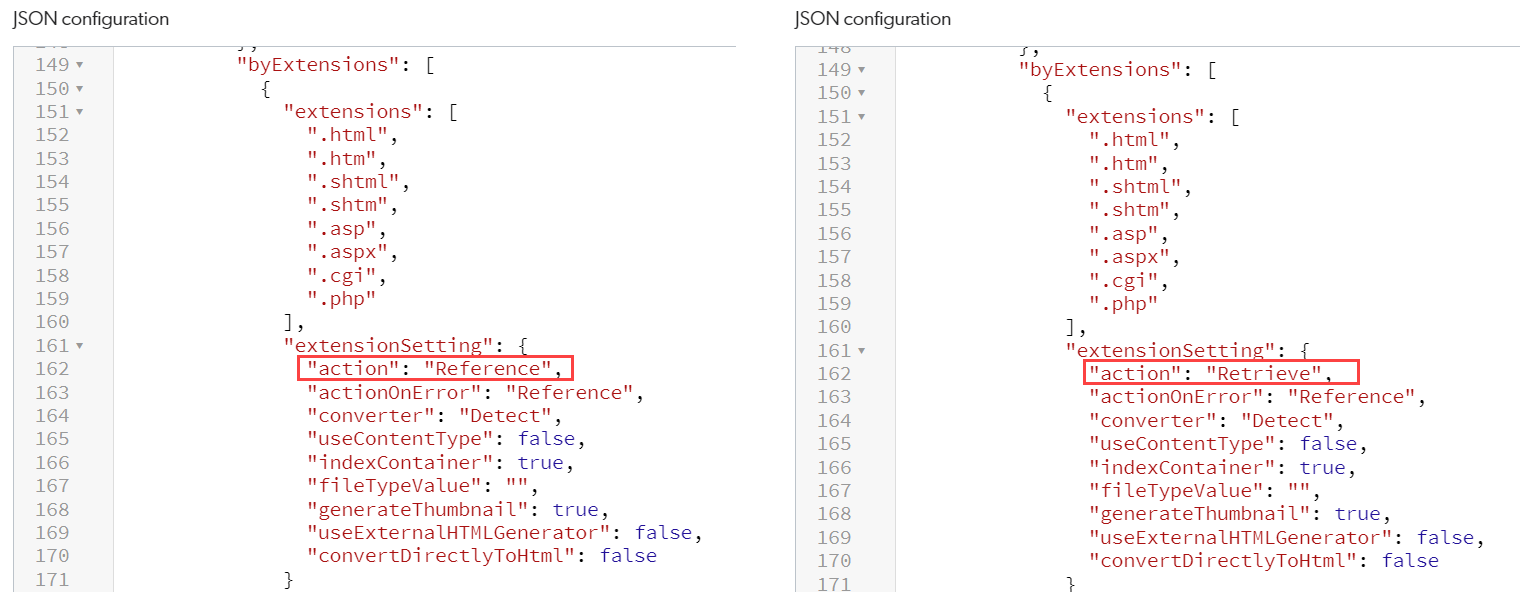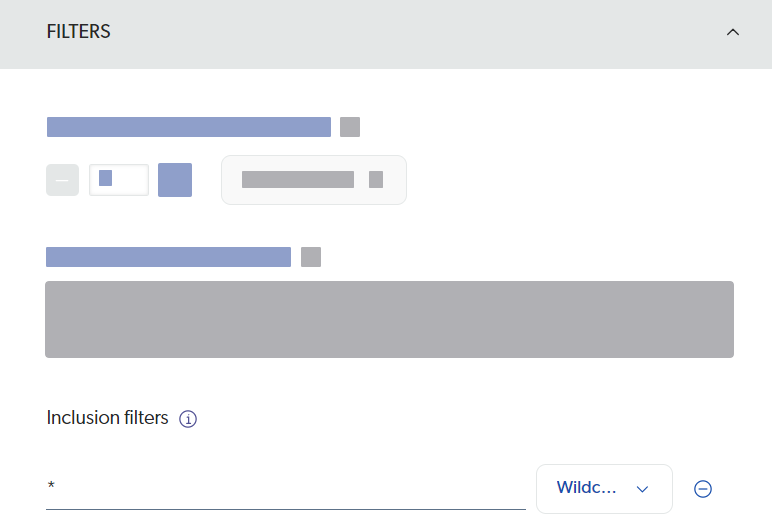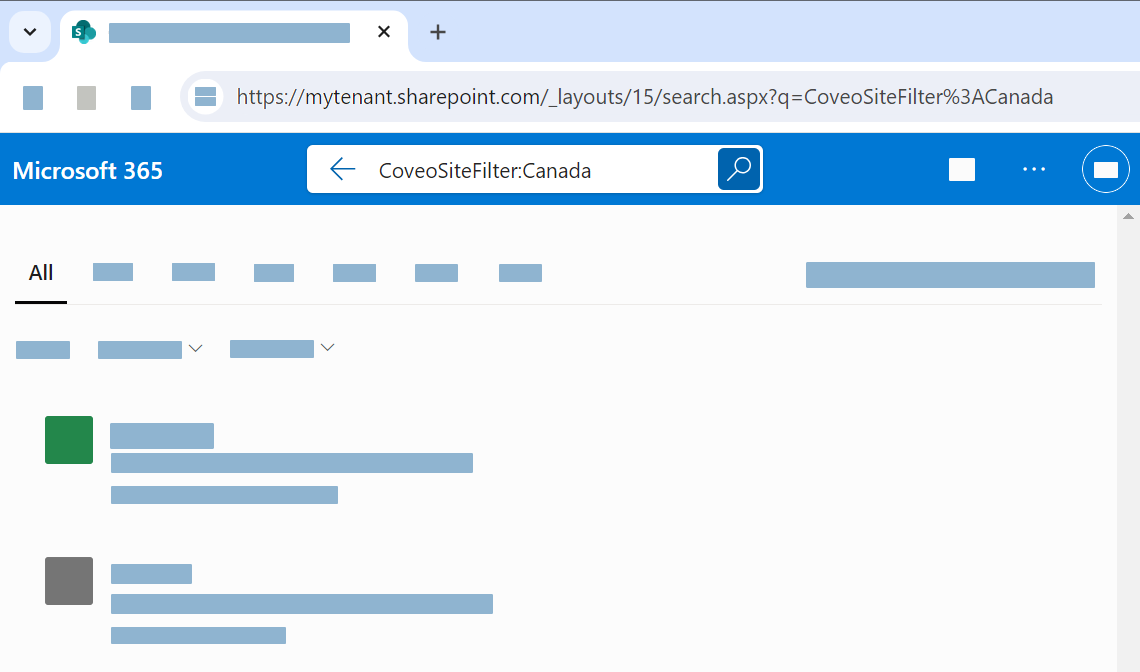Troubleshooting SharePoint Online source issues
Troubleshooting SharePoint Online source issues
This article provides troubleshooting best practices and lists common issues when indexing content with the SharePoint Online source.
Important: Troubleshooting fundamentals
Though the information provided in the Common issues section will often help you identify and resolve a problem, keep the following in mind:
-
A given set of symptoms can be caused by different underlying issues.
-
When you expand a content update activity in the Activity panel or Activity Browser (platform-ca | platform-eu | platform-au) page, the error code and messages displayed may only be general indicators of the problem.
-
Coveo only halts an indexing operation and displays an error when specific conditions are met.
Consequently, finding the root cause of an issue may require more granular information, which only update logs can deliver.
To download an update log
-
On the Sources (platform-ca | platform-eu | platform-au) page, click the desired resource, and then click Activity in the Action bar.
-
In the Activity panel that opens, click the desired activity, and then click Download Logs in the Action bar. The downloaded file is named after the unique operation ID representing the selected activity.
To locate issue root causes in logs
-
Open the log file in a text file viewer.
-
Look for
WARN,ERROR, andFATALmessages.
Use a log file viewer that supports highlighting by log level to make these messages more noticeable.
-
If necessary, review
INFOmessages. They sometimes reveal a configuration that you overlooked and that may be causing the issue.
Common issues
Issues are divided into categories. Click a category description below to reach the related section.
Missing items
|
|
URL exclusion
Context and symptoms:
Likely cause and resolutionCause: Your current inclusion and exclusion filters may be filtering out the URL you specified. Resolution: Open your source and review your URL exclusion and inclusion rules. To be accessed, a URL must meet the following requirements:
|
|
|
Sites discovery address missing from inclusion scope
Context and symptoms:
Likely cause and resolutionCause: When using the All sites or Hub sites option, Coveo uses a special URL (that is, Resolution: If you don’t need to filter content on a URL basis, use the Include all non-excluded items inclusion option.
If you need to filter content on a URL basis, add the |
|
|
List, library, or site isn’t configured to be indexed
Context and symptoms:
Likely cause and resolutionCause: SharePoint Online has settings to prevent list, library, and site items from being indexed. Coveo only indexes items that are configured to be indexed in SharePoint Online. For example, if items in a specific list don’t appear in your SharePoint Online source, the Allow items from this list to appear in search results? list setting may be set to No. Resolution: Make sure the list, library, or site setting allows indexing. The following procedure shows how to allow indexing for a list by selecting Yes for the Allow items from this list to appear in search results? option. The option name for the library and site settings are similar. The site indexing setting is located under Site Settings > Search and Offline Availability. To allow indexing for a list
|
|
|
Too many requests
Context and symptoms: Indexing stops with the Activity Browser (platform-ca | platform-eu | platform-au) displaying a Likely cause and resolutionCause: The SharePoint Online API limits the number of requests that can be made in a given time period. One of these limits has been reached and the SharePoint Online API no longer accepts requests. Resolution: The SharePoint Online API will start accepting requests again after a certain time period. The short-term solution is to wait for a few minutes before trying an indexing operation again. There are several long-term solutions, including the following:
|
|
|
Absolute path of item is too long
Context and symptoms: SharePoint Online items whose absolute paths are long aren’t indexed. Likely cause and resolutionCause: The SharePoint Online API supports path lengths up to 400 characters. You may be trying to index items whose absolute paths are longer than 400 characters. Resolution: Shorten folder and file names or rework the folder structure in SharePoint Online to reduce the absolute path length of the items you want to index. |
|
|
Tagged site hasn’t been indexed by SharePoint Online
Context and symptoms:
Likely cause and resolutionCause: The tagged site hasn’t yet been indexed by SharePoint Online. Resolution:
|
|
|
Content freshness issue
Symptom: Recently added items in SharePoint Online are still not appearing in the Content Browser (platform-ca | platform-eu | platform-au). Likely cause and resolutionCause and Resolution: See Indexed content is not up to date. |
Extra or unwanted items
|
|
Missing filtering
Symptom: The Content Browser (platform-ca | platform-eu | platform-au) shows items you don’t want to index. Likely cause and resolutionCause: Your current SharePoint Online source filtering settings don’t filter out the unwanted items. Resolution: Edit your source. In the Content to index subtab, adjust your filtering to exclude the unwanted items. |
|
|
Content freshness issue
Symptom: Items recently deleted in SharePoint Online are still appearing in the Content Browser (platform-ca | platform-eu | platform-au). Likely cause and resolutionCause and Resolution: See Indexed content is not up to date. |
Unexpected or missing content inside items
|
|
The “Embed” web part content isn’t indexed
Context and symptoms: When accessing the Quick view of a page item, the content added using the Embed web part isn’t displayed. Likely cause and resolutionCause: The For example, if you embed a YouTube video in a SharePoint Online page, the video isn’t displayed in the Quick view.
Only information about the video included in the Resolution: The described behavior is the expected one. As a workaround, you may consider integrating the content of the external page into the SharePoint Online page, in a text section or comment. |
|
|
Quick view of site pages show HTML tags or unexpected characters
Context and symptoms: When accessing the Quick view of a page item, HTML tags or unexpected characters are displayed. Likely cause and resolutionCause: The SharePoint Online connector retrieves the Resolution: A possible solution may be to replace the web part (for example, the Code Snippet web part) with a more basic one in the SharePoint Online page. |
|
|
Indexing by reference
Context and symptoms:

Likely cause and resolutionCause: You may be indexing by reference. When indexing by reference, the body of the web page (used for the Quick view) isn’t retrieved and no excerpt (used for the item description) is generated. Resolution: Access the Edit configuration with JSON panel.
If HTML documents are currently indexed by 
|
|
|
Broken images in the Quick view
Context and symptoms: When accessing the Quick view of an item, images are broken. 
Likely cause and resolutionCause: The connector retrieves web page HTML as is and doesn’t retrieve the images referenced in the HTML.
The Content Browser Quick view displays this HTML without any alteration.
This means it doesn’t replace relative paths, such as Images that require authentication to be viewed also appear broken when browsing the web page item Quick view in the Content Browser. Resolution: None. This is a known limitation of the Content Browser Quick view. The Quick view is intended to provide a preview of the item content, not a full rendering of the web page.
To view the full web page, users can open the original document by clicking the item |
Unexpected item field values
|
|
Inexistent field
Context and symptoms:
Likely cause and resolutionCause: The field doesn’t exist. You need to create the field and the field mapping. Resolution:
|
|
|
Field mapping issue
Context and symptoms:
Likely cause and resolutionCause: There may be a field mapping issue. Resolution:
|
|
|
Title field value selection
Symptom: The item Likely cause and resolutionCause: Coveo has a Resolution: Coveo automatically extracts several pieces of metadata that you can use as item titles.
See Item title selection mapping rule options to control the value selection process.
Edit the |
Indexing is slow
|
|
Indexing performance issue
Symptoms:
Likely cause and resolutionCause and Resolution: See Indexed content is not up to date. |
Indexed content is not up to date
|
|
Content scoping or throttling issue
Symptoms:
Likely cause and resolutionCause: A combination of factors may cause poor SharePoint Online source indexing performance. These revolve around insufficient content scoping and SharePoint Online API throttling. Resolution: The Performance leading practices article provides many recommendations to improve indexing performance, namely:
|
|
|
Source update schedules
Symptom: Recent changes to site pages aren’t reflected in the Content Browser (platform-ca | platform-eu | platform-au). Likely cause and resolutionCause:
Resolution: Make sure the rescan and refresh schedules are enabled and that their frequency settings are optimized. |
|
|
Number of items limit reached
Context and symptoms:
Likely cause and resolutionCause: Indexing is blocked because you’ve reached the 200% license item usage threshold. Resolution:
|
|
|
Authentication issue
Context and symptoms:
Likely cause and resolutionCause: The SharePoint Online connector may be unable to authenticate to SharePoint Online because the access token associated with the certificate or SharePoint Online user account is no longer valid. An invalid access token occurs when:
Resolution: After making sure that the issue is indeed due to an invalid access token, update the access token. |
|
|
Changed site collection URL
Context and symptoms:
Likely cause and resolutionCause: The site collection web address may have been changed in SharePoint Online and your source configuration may not have been updated accordingly. Resolution:
|



